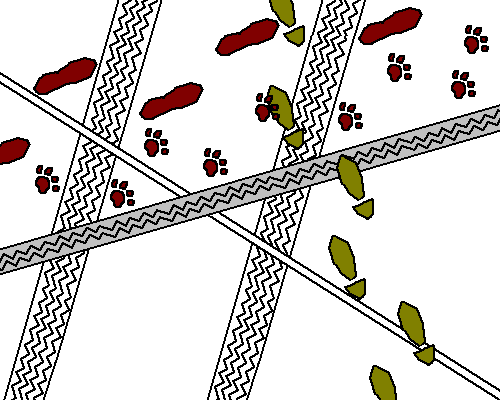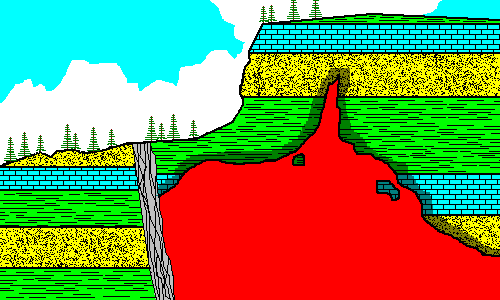The Handyman rides a bike
The Cook rides a motorcycle
The Maid drives a car
The Nephew has a seeing-eye dog

Steven Dutch, Natural and Applied Sciences, University of Wisconsin - Green Bay
First-time Visitors: Please visit Site
Map and Disclaimer. Use "Back" to return here.
The sciences that set the general principles for all the other sciences
The sciences that describe the great systems that make up the Universe
Possibly:
Sciences that examine some smaller, more manageable part of the Basic or Megasystem Sciences
Physics
|
Interdisciplinary
|
Chemistry
|
Astronomy
|
Biology
|
Some Geologic Rates
At 1 Second = 1 Year:
Ancient Landscapes
Mass Extinctions
Ancient Ocean Basins
A Whodunit? Last night one of Green Bay's premier beer can collections was stolen. The only clues are tracks in the snow. We know the last person leaving the scene was the thief. Below: the evidence and the suspects
| The Butler walks to work The Handyman rides a bike The Cook rides a motorcycle The Maid drives a car The Nephew has a seeing-eye dog |
 |
If you ever watch mysteries nowadays, you know the butler never does it any more. But if one of the dog's footprints had not chanced to overlap the butler's, we would not be able to tell which of the two went last. That often happens in geology - you can't always tell which of two events happened last, and often having the critical evidence is a matter of chance.
Contacts between rock bodies are where we find the critical information about time relationships. Below is a hypothetical view of a cliff. The colors and patterns are commonly used in geology. The green lined beds are shale, the blue brickwork denotes limestone, and the yellow stippled rocks are sandstone. The red is an intrusion and the gray is a fault.

The order in which the rock layers formed is obvious: those on the bottom formed first. The intrusion has to post-date at least the uppermost layer it intrudes. Intrusions often alter or bake the adjacent rocks (dark tones) and include chunks of them.
The fault shown here is actually more realistic than the simple lines shown in most illustrations. Generally faults are zones of fractured and crushed rock rather than simple clean planes. Now how do the rocks left of the fault relate to those on the right? We can't tell. Nowhere right of the fault do we find sandstone bounded above and below by shale. So we'll have to go elsewhere to find out. The logical way to sort out data gathered at widely separated localities is to plot it on a map. Obviously the fault is later than all the rocks it cuts.
What about the fault and the intrusion? Here we'd have to get up close to the fault and look. If the intrusion baked the rocks in the fault zone or cut across parts of the fault, we'd conclude the intrusion was later. If there were bits of the intrusive rock included in the fault zone, we'd conclude the fault was later.
:Return to Professor Dutch's home page
Last Update 2/3/1997